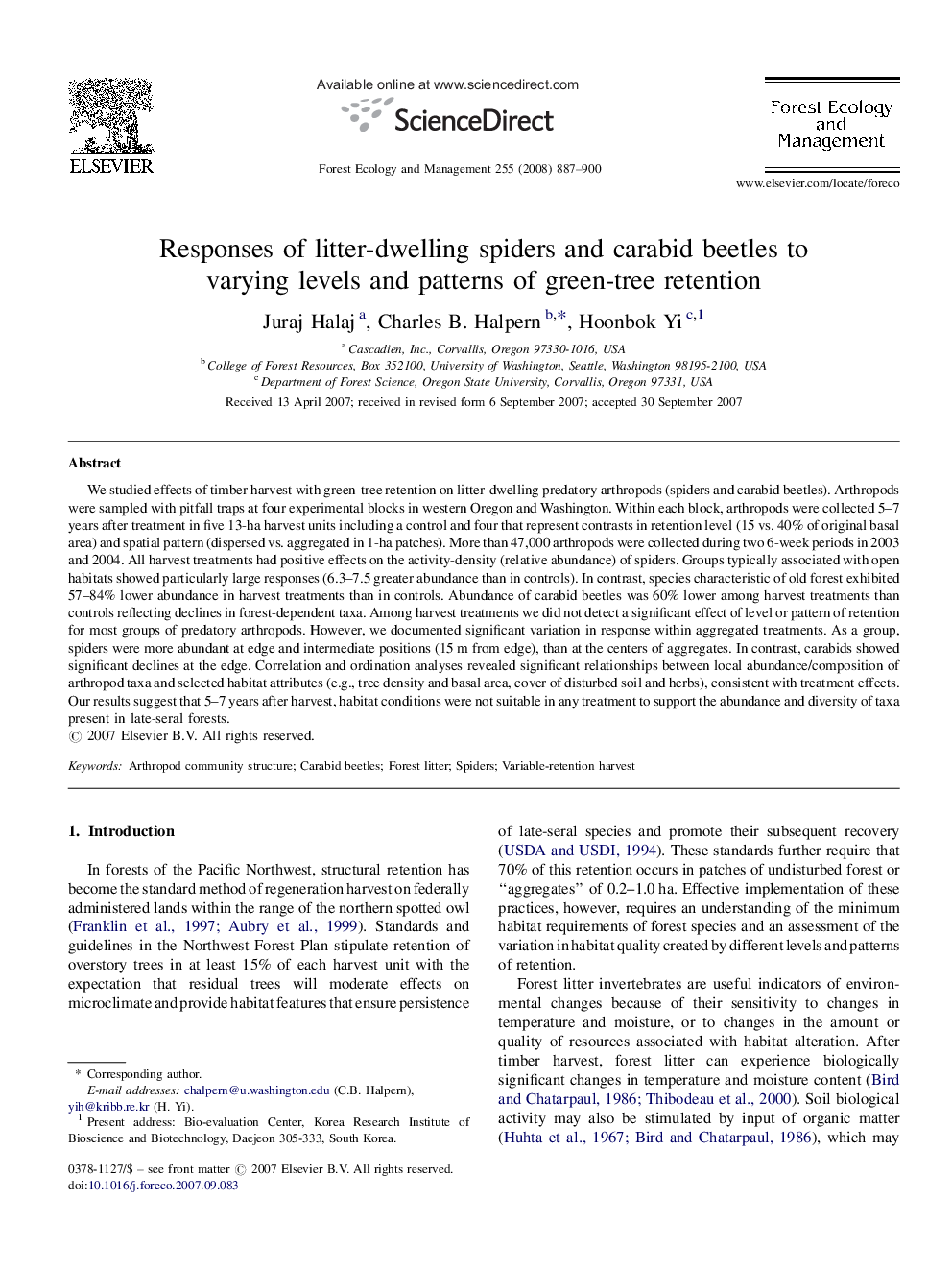| Article ID | Journal | Published Year | Pages | File Type |
|---|---|---|---|---|
| 89866 | Forest Ecology and Management | 2008 | 14 Pages |
We studied effects of timber harvest with green-tree retention on litter-dwelling predatory arthropods (spiders and carabid beetles). Arthropods were sampled with pitfall traps at four experimental blocks in western Oregon and Washington. Within each block, arthropods were collected 5–7 years after treatment in five 13-ha harvest units including a control and four that represent contrasts in retention level (15 vs. 40% of original basal area) and spatial pattern (dispersed vs. aggregated in 1-ha patches). More than 47,000 arthropods were collected during two 6-week periods in 2003 and 2004. All harvest treatments had positive effects on the activity-density (relative abundance) of spiders. Groups typically associated with open habitats showed particularly large responses (6.3–7.5 greater abundance than in controls). In contrast, species characteristic of old forest exhibited 57–84% lower abundance in harvest treatments than in controls. Abundance of carabid beetles was 60% lower among harvest treatments than controls reflecting declines in forest-dependent taxa. Among harvest treatments we did not detect a significant effect of level or pattern of retention for most groups of predatory arthropods. However, we documented significant variation in response within aggregated treatments. As a group, spiders were more abundant at edge and intermediate positions (15 m from edge), than at the centers of aggregates. In contrast, carabids showed significant declines at the edge. Correlation and ordination analyses revealed significant relationships between local abundance/composition of arthropod taxa and selected habitat attributes (e.g., tree density and basal area, cover of disturbed soil and herbs), consistent with treatment effects. Our results suggest that 5–7 years after harvest, habitat conditions were not suitable in any treatment to support the abundance and diversity of taxa present in late-seral forests.
